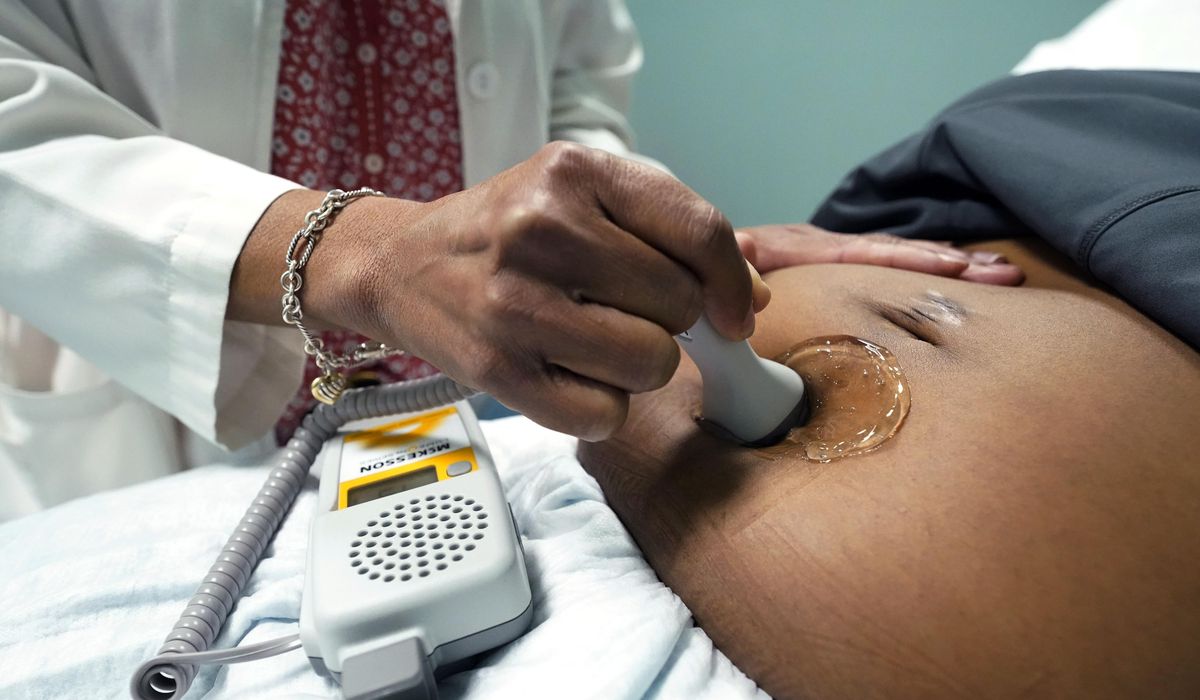


Children of impoverished mothers who make unhealthy lifestyle choices are likelier than other babies to die before their first birthday, according to federal data released Tuesday.
The Centers for Disease Control and Prevention said infant mortality rates in 2019-2021 were highest among mothers who were overweight, smoked cigarettes during pregnancy, paid their hospital bill with Medicaid, purchased food with Women, Infants and Children government assistance and started prenatal care late in pregnancy.
The babies of Black, American Indian and Alaska Native mothers in these categories were also likelier than other racial groups to die, the CDC’s National Center for Health Statistics reported. The infants of Asian mothers were the least likely.
“Having this information can help inform where to focus efforts to improve infant outcomes,” Danielle Ely, a CDC statistician who co-authored the report, told The Washington Times.
Ms. Ely said the report built on similar findings from older data and included more racial and ethnic groups than previously measured.
According to the report, 11,025,479 babies were born in the U.S. from 2019 to 2021.
During that period, 60,320 infants died before their first birthday at a rate of 5.48 deaths for every 1,000 live births.
According to the report, obese mothers experienced 6.73 infant deaths per 1,000 births compared with a rate of 4.31 deaths for women of normal weight. The infant mortality rate among cigarette smokers was 11.27 deaths for every 1,000 births versus 5.08 for nonsmokers.
Infant mortality rates were slightly higher for women who paid for food with WIC benefits than for other women.
Women covered by Medicaid lost their children at a rate of 7.19 deaths per 1,000 live births compared with a rate of 3.95 for those who paid for delivery with private insurance.
“Mortality rates are consistently higher for infants of American Indian and Alaska Native and Black women and lower for infants of Asian women across categories of maternal characteristics,” the study noted.
According to the CDC, the findings and a recent increase in the provisional 2022 infant mortality rate call for “a continued need to monitor deaths in disproportionately impacted populations.”
Some outside experts pointed to actions that mothers and public officials could take.
“Staying healthy and active prior to, and during, your pregnancy is one of the most important things that women can do to help protect their unborn babies,” said Dr. Ruth Milanaik, a developmental-behavioral pediatrician at the Steven and Alexandra Cohen Children’s Medical Center of New York. “The best way to achieve this is to try to maintain a healthy weight and to stop smoking.”
She encouraged mothers to eat fewer processed foods and noted that smoking “has been proven time and time again to be very harmful to growing babies.”
Alison Gemmill, a perinatal epidemiologist teaching at Johns Hopkins Bloomberg School of Public Health, said strategies should focus on reducing the most common cause of infant death: complications related to premature birth and low birth rate.
“While the report highlights modifiable risk factors such as smoking and obesity, it also sheds light on how people with lower socioeconomic status bear the brunt of these risks due to limited access to resources and higher exposure to environmental stressors, including chemicals that may cause birth defects,” Ms. Gemmill said.
• Sean Salai can be reached at ssalai@washingtontimes.com.
